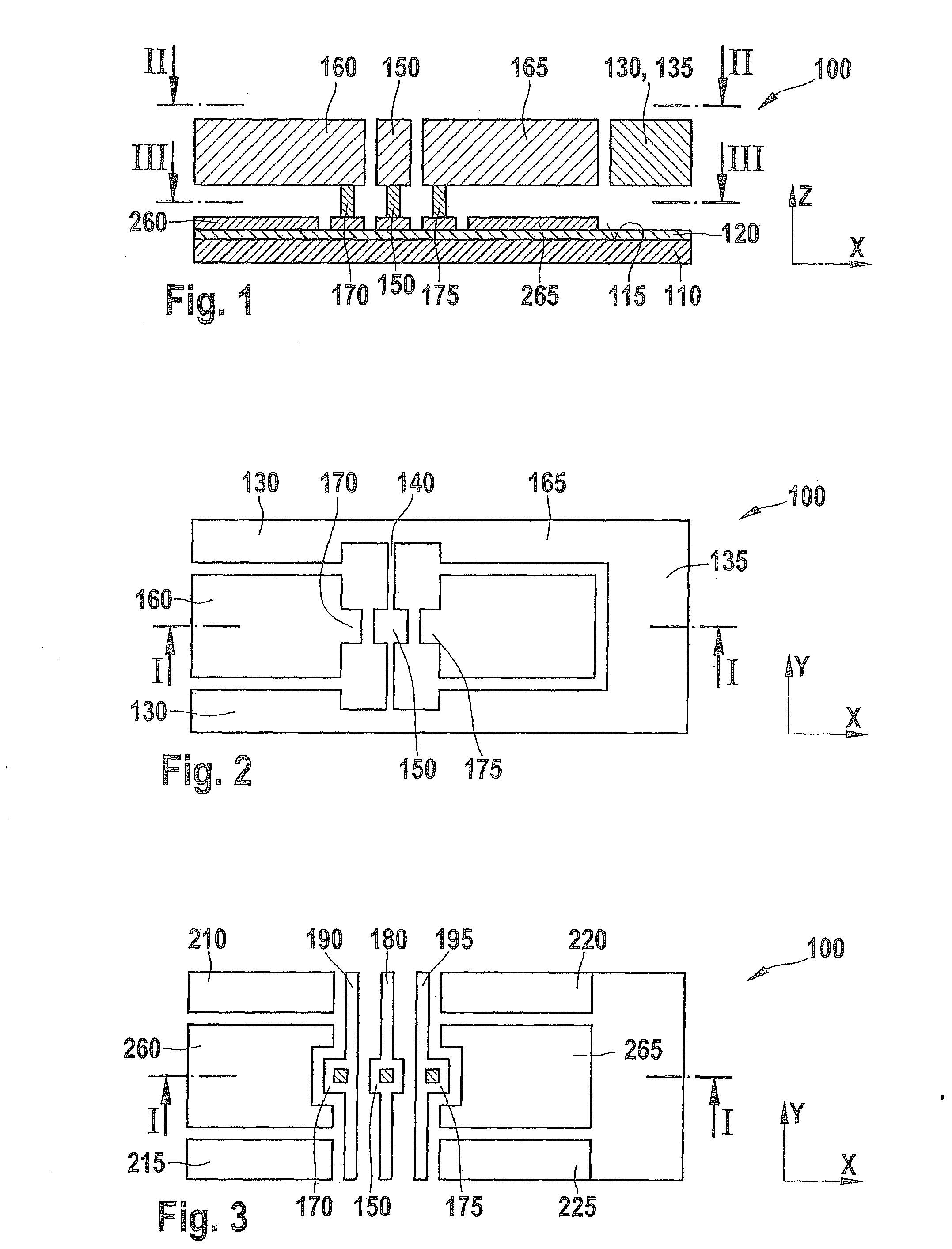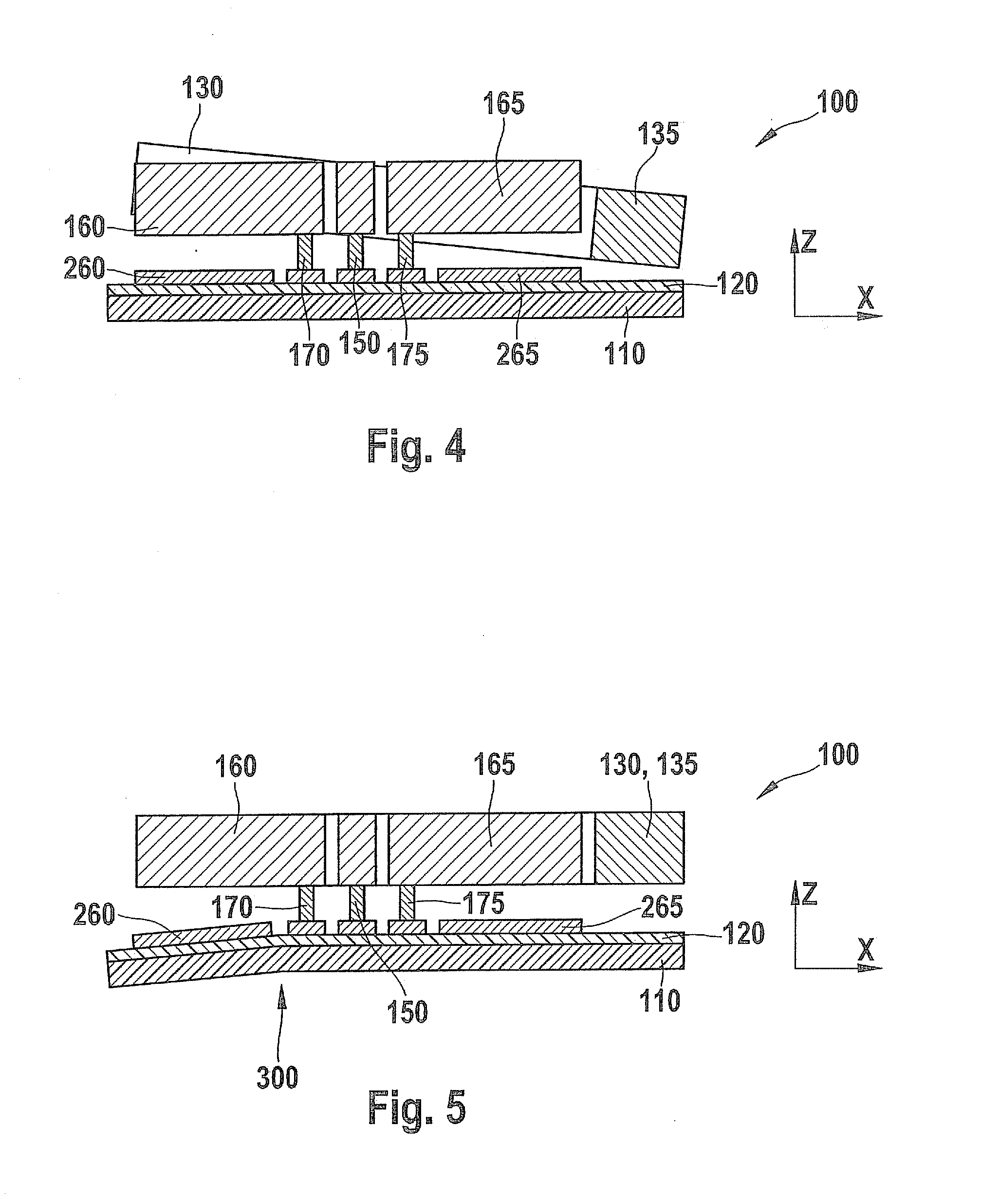Acceleration sensor
- Summary
- Abstract
- Description
- Claims
- Application Information
AI Technical Summary
Benefits of technology
Problems solved by technology
Method used
Image
Examples
second embodiment
[0046]FIG. 6 shows a plan view of an acceleration sensor 1100 in accordance with a FIG. 7 shows, in a section parallel to the x-y plane, the electrodes of acceleration sensor 1100 which are connected to substrate 110. Acceleration sensor 1100 has, connected to substrate 110, a third compensation counter-electrode 1260, a fourth compensation counter-electrode 1263, a fifth compensation counter-electrode 1266, a sixth compensation counter-electrode 1270, a seventh compensation counter-electrode 1273 and an eighth compensation counter-electrode 1276. In addition, acceleration sensor 1100 has, fixedly connected to the substrate, a third counter-electrode 1210 and a fourth counter-electrode 1220. Third counter-electrode 1210 is configured like a comb with four parallel teeth. Third, fourth and fifth compensation counter-electrode 1260, 1263 and 1266 are arranged in succession in y direction between the parallel teeth of third counter-electrode 1210. Fourth counter-electrode 1220 is conf...
third embodiment
[0049]FIGS. 8 and 9 show an acceleration sensor 2100 in accordance with a FIG. 9 shows, in a section parallel to the x-y plane, the counter-electrodes of acceleration sensor 2100 which are fixedly connected to the substrate. FIG. 8 shows, in a plan view, compensation electrodes 160, 165 arranged in z direction above compensation counter-electrodes 260, 265, and rocker 130 arranged in z direction above counter-electrodes 210, 215, 220, 225. In contrast to the embodiment of FIGS. 1 to 3, acceleration sensor 2100 has only one supply line 2180 and one suspension post 2150. Suspension post 2150 connects both first compensation electrode 160 and second compensation electrode 165 to supply line 2180. In addition, suspension post 2150 connects rocker 130 to supply line 2180 via torsion spring 140. Acceleration sensor 2100 thereby only permits compensation electrodes 160, 165 and rocker 130 to be kept to a common potential. In many applications, however, that does not represent any limitati...
PUM
 Login to View More
Login to View More Abstract
Description
Claims
Application Information
 Login to View More
Login to View More - R&D
- Intellectual Property
- Life Sciences
- Materials
- Tech Scout
- Unparalleled Data Quality
- Higher Quality Content
- 60% Fewer Hallucinations
Browse by: Latest US Patents, China's latest patents, Technical Efficacy Thesaurus, Application Domain, Technology Topic, Popular Technical Reports.
© 2025 PatSnap. All rights reserved.Legal|Privacy policy|Modern Slavery Act Transparency Statement|Sitemap|About US| Contact US: help@patsnap.com



